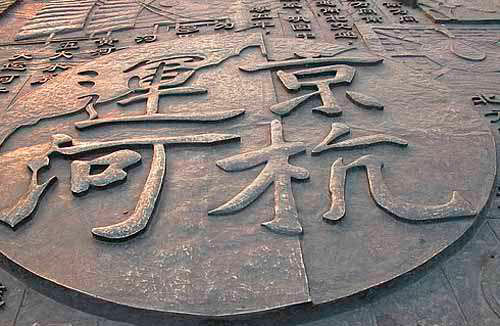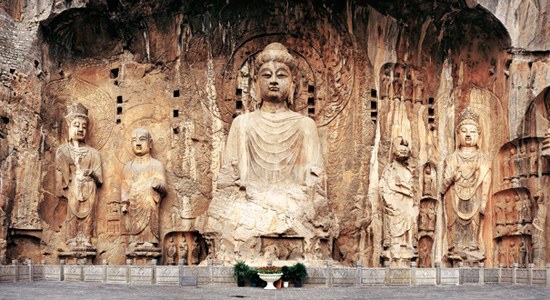


Luoyang plays an important role in the history of Grand Canal, as an epicenter for food distribution and an ancient capital of China.
"Luoyang, the "lost city" of sorts...Once one of the 4 Great Ancient Capitals of China, it was the heart of the Grand Canal back in its hey-day. This city was the "special" one, stretching the canal in its middle all the way to western Henan province. It was here that crucial grains from the southern portion of the canal were pumped into the city through the Luohe River, stored, and pumped across and over to the north of the country, feeding all cities along the way. Hence, Luoyang quite literally fed China into much of its development during the Sui and Tang dynasties." said Raquel Olsson, Luoyang, Henan.
Famous for its beautiful peonies, magnificent Longmen Grottoes and legendary White Horse Temple, Luoyang was the capital for 13 dynasties, including the dynamic and powerful Tang Dynasty. During its peak, the Tang boasted the highest population and broadest borders among all nations of the world.
Like many of the world's greatest cities, like London which has the Thames, and Cairo the Nile - a river runs right across Luoyang's city centre.
A recent on-screen revival of the city's golden days is Hong Kong director Tsui Hark's 2010 film, "Detective Dee - the mystery of Phantom Flames."
The greatness of the flourishing Tang Dynasty is lovingly brought back to life in the film. But even though an efficient waterway network, millions of navy vessels, imperial architecture and blossoming markets all made Luoyang an international city, it was not to last.
The once-thriving canal system helped Luoyang reach its pinnacle, but changing demographics had put its prosperity in danger. As in the 13th century, Yuan Dynasty rulers relocated the capital to northern China's Beijing, and revised the canal route, leaving Luoyang out of the network.
Today, no traces of the man-made canals can be found after 800 years of abandonment, and the granaries are the most significant heritage in Luoyang. They alone accounted for more than half of the state grain reserves.
"This vast complex of granaries has only been partly excavated. As you may see, now all the green grass planted in circles indicated the positions of the individual granaries centuries ago. And at that time we had 700 of them here... This area was connected with the Luohe River in the south, and has played a vital role in the canal system as warehouses." said Mu Fangzhou, Luoyang, Henan.
Built in the Sui Dynasty and destroyed by wars, Huiluocang Granary was 646 meters long and 355 meters wide. Excavation began in 2004, and now exhibition halls have been constructed in the better-preserved areas.
There I meet some archaeologists working in the field. They are carefully excavating a pit, cleaning out the sludge to find what's hidden beneath.
"Chinese people learned the fact that the climate change is almost suspended belong the ground, especially when it comes to a 7-meter deep cellar. The humidity and temperature is low and constant, the grains could stay safe for 7-8 years without going bad. This method of storaging grains is still in use until today." said Mu Fangzhou, Luoyang, Henan.
Giant pits were dug first, bamboo mats were laid on the floor and hung on walls to keep the grain clean and dry. Wooden boards were used to create horizontal layers, making it easy for workers to transport the grain.
The archaeologists said they have cracked the method of grain storage, but as excavation work continues, more unknown treasures are surely waiting to be discovered.
Luoyang Old Town, an old capital of China
2014-01-29Ancient City Luoyang of Sui and Tang Dynasties
2013-08-02Luoyang, where ancient glory shines
2013-03-11Copyright ©1999-2018
Chinanews.com. All rights reserved.
Reproduction in whole or in part without permission is prohibited.